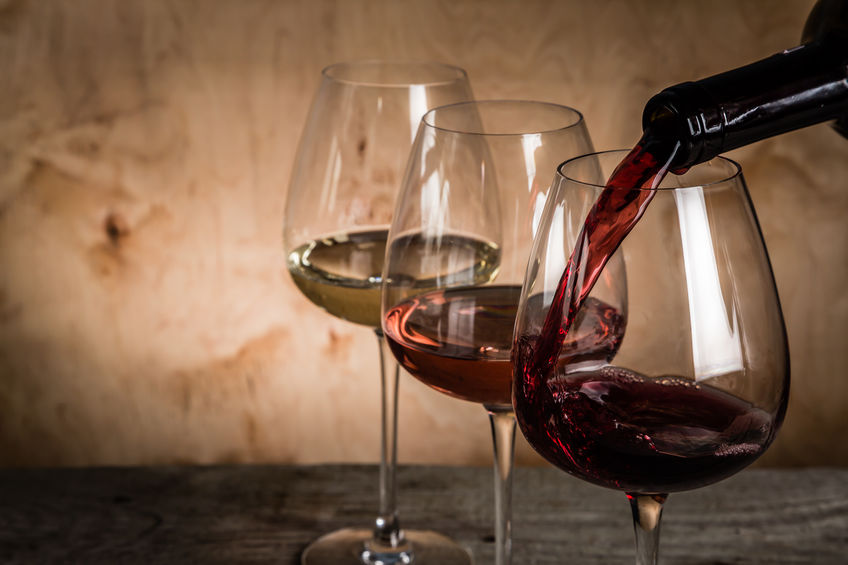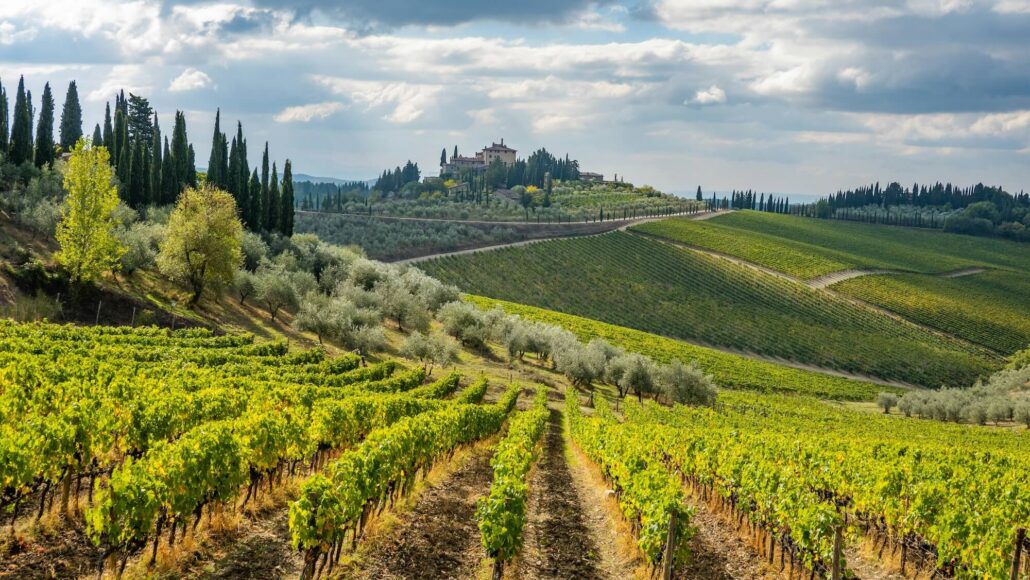Wine tours in Tuscany - About Angie - +39 3333185705 - angie.chianti@gmail.com
Chianti, a world-renowned wine region in Tuscany, Italy, offers a diverse range of wines that captivate the senses and reflect the rich heritage of the area. In this article, we’ll explore the different types of Chianti wines, their unique characteristics, and why a Chianti wine tour with our agency is the best way to experience them.
What is Chianti? Is Chianti wine sweet? What is the difference between Chianti and Chianti Classico? What is Ruffino Chianti? These are just some of the many questions that we receive when students come to learn about Tuscany’s wines.
While most people have heard of Chianti red wine, unless you have spent time studying the Chianti wine region or Chianti red wine, chances are you may not know much about it. Where does it come from? Which kind of grapes are used to make it? What are some of its characteristics? What are some of its variations?

What is Chianti?
Chianti is a dry, red wine that comes from a specific region in Tuscany – the Chianti region. Chianti grapes do not exist, rather, the Chianti red wine is made from Sangiovese grapes grown in the Chianti region. Chianti Classico comes from an even smaller region within the Chianti region.
One well-known brand of Chianti is Ruffino Chianti, a DOCG dating all the way back to 1877, when it was first produced. Ruffino Chianti is extremely well known in the United States because prior to World War I it was the only Chianti exported from Italy to the United States. It was a sort of Italian wine ambassador all around the world. Ruffino Chianti is made with a minimum of 70% Sangiovese grapes plus other red varietals such as Merlot or Cabernet Sauvignon.
The Rich Heritage of Chianti
Chianti wines are made primarily from the Sangiovese grape, known for its bright acidity, firm tannins, and flavors of cherry, plum, and earthy herbs. However, there are several distinct types of Chianti wines, each with its own unique attributes.
Let’s delve into the main categories:
1. Chianti DOCG
Chianti DOCG is the most basic level of Chianti wine, but it still adheres to strict regulations to ensure quality. These wines can be produced in a broader area within Tuscany, including provinces like Florence, Siena, Pisa, Arezzo, Pistoia, and Prato.
- Characteristics: Light to medium-bodied with high acidity and moderate tannins. Flavors often include red cherry, plum, and a touch of earthiness.
- Pairings: Perfect with pasta dishes, pizza, and grilled meats.
2. Chianti Classico DOCG
Chianti Classico comes from the historical heart of the Chianti region, located between Florence and Siena. It is considered the premier sub-region for producing Chianti wines.
- Characteristics: More structured and complex than Chianti DOCG, with deeper flavors of dark cherry, plum, and hints of spice and leather. The wine must be aged for at least 12 months.
- Pairings: Ideal with roasted meats, hearty stews, and aged cheeses.
3. Chianti Riserva
Chianti Riserva is a designation for Chianti and Chianti Classico wines that have been aged for a minimum of 24 months, with at least three months in the bottle.
- Characteristics: Rich and full-bodied with complex flavors of dark fruits, tobacco, and earthy undertones. The extended aging process adds depth and smoothness.
- Pairings: Excellent with braised meats, game dishes, and rich pastas with truffle or mushroom sauces.
4. Chianti Superiore
Chianti Superiore is produced in the same area as Chianti DOCG but adheres to stricter production standards, resulting in higher quality wines.
- Characteristics: Balanced and elegant, with vibrant acidity and refined tannins. Flavors include red and black cherries, herbs, and a touch of oak.
- Pairings: Complements grilled vegetables, risotto, and poultry dishes.
5. Chianti Gran Selezione
Chianti Gran Selezione is the highest quality designation for Chianti Classico wines, introduced in 2014. These wines are made from the best grapes of a single estate and must be aged for at least 30 months.
- Characteristics: Deep, complex, and intensely flavored with layers of dark fruits, spices, and earthy notes. The aging process adds a silky texture and exceptional balance.
- Pairings: Perfect for special occasions, pairing beautifully with premium cuts of meat, gourmet dishes, and fine cheeses.

The Chianti region
Spanning the picturesque provinces of Florence and Siena, the Chianti region is a testament to Italy’s rich viticultural heritage, covering an expanse of 71,800 hectares. This area is celebrated for its diverse array of Chianti wines, each reflecting the unique terroir of towns such as San Casciano in Val di Pesa, where the tradition meets innovation; Greve in Chianti, known for its historic squares surrounded by vineyards; Tavarnelle Val di Pesa and Barberino Val d’Elsa, where rolling hills offer optimal vineyard conditions; Poggibonsi, with its robust Sangiovese grapes; Radda in Chianti and Castellina in Chianti, which are heartlands of Chianti Classico production; Gaiole in Chianti, steeped in medieval history; and Castelnuovo Berardenga, where the wines embody the soul of southern Tuscany.
The winemaking tradition in the Chianti region is governed by specific regulations that ensure the high quality of its wines, with a focus on maintaining a Sangiovese grape minimum in the blend. This practice is common across different Chianti zones, aiming to produce wines that are rich in flavor and complexity. Through a combination of Sangiovese with other grapes like Canaiolo and Colorino, as well as international varieties such as Cabernet Sauvignon and Merlot, Chianti wines achieve a spectrum of tastes, from lively and fruity to robust and sophisticated.
The rich tapestry of Chianti’s winemaking zones not only contributes to the diversity of its wines, but also tells the story of a region where every vineyard, every bottle, captures the essence of its homeland, making Chianti a symbol of Italian wine excellence recognized worldwide.
Experience Chianti with Our Exclusive Wine Tours
To fully appreciate the diverse range of Chianti wines, there’s no better way than to take a Chianti wine tour with our agency. Our expertly guided tours take you to some of the most prestigious wineries in the Chianti region, where you can experience Chianti wine tasting at its finest.
- Chianti and Tuscany Wine Tour: Join our Chianti wine tour and explore the heart of Chianti. Visit historic wineries, learn about the winemaking process, and taste a variety of exceptional wines.
- Tuscan Wine Tour: Discover the broader Tuscan wine region with our comprehensive tour. Experience the rich diversity of Tuscan wines, including Chianti and Super Tuscans.
- Florence Vineyard Tour: Starting from Florence, this tour takes you through the picturesque vineyards of Chianti. Enjoy guided tastings and immerse yourself in the stunning Tuscan landscape.
Chianti wine price
The pricing of Chianti wines varies significantly due to factors like the blend of grapes, organic certification, production methods, and aging processes. For example, a Chianti Classico often commands a higher price than a Chianti Colli Fiorentini, with the Chianti Classico Riserva usually being the priciest among them. Contrary to its reputation in the United States as an affordable table wine, Chianti can indeed offer exquisite quality for those who know where to look for.
Where to Find Chianti Wines
Chianti wines are widely available in wine shops and online retailers around the world. However, for an authentic experience, consider visiting Tuscany and purchasing directly from the wineries. Many of our tour partners offer exclusive bottles that you won’t find elsewhere, making your visit even more special.
Chianti wines offer a remarkable journey through Tuscany’s winemaking heritage. From the approachable Chianti DOCG to the prestigious Chianti Gran Selezione, each variety brings its own unique flavors and history to the table. Join us on a Chianti wine tour and immerse yourself in the beauty, culture, and exquisite tastes of this legendary region. Book your tuscan wine tour today and discover why Chianti is truly a wine lover’s paradise.





